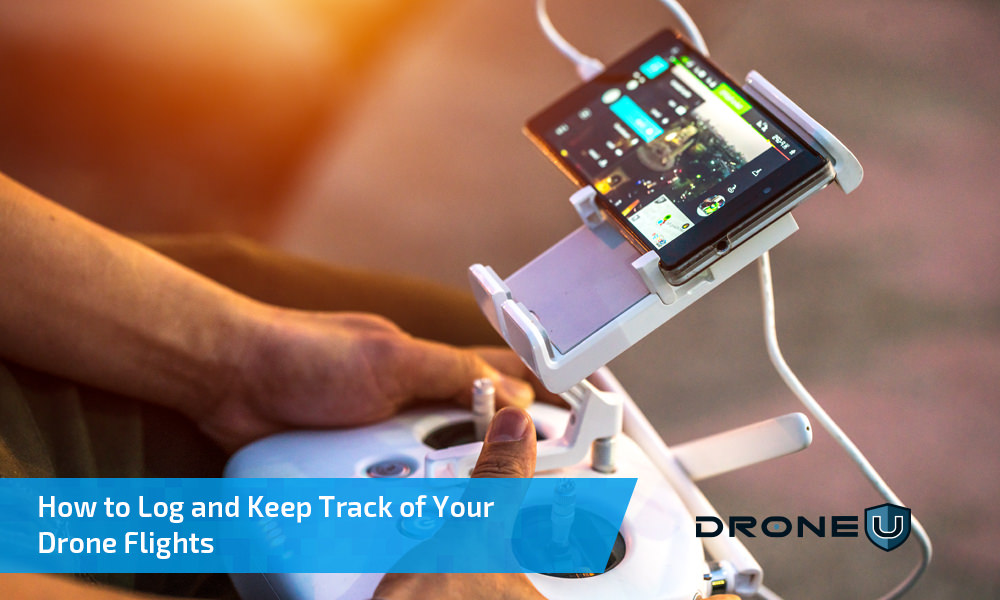There are drone pilots who meticulously believing in logging their flights. While, there are some who see no merit in doing so. Which is the right approach? Does Part 107 make it mandatory for you to log your flights? And, which is the best and easiest way to log your flights. Read on to find out as we dive into each of these topics.
Does Part 107 Require You to Log Your Flight?
This is the first question that drone pilots ask us. And the answer is clear – NO. You are not required by the law to log your flight data at all. However, does the FAA recommend you keep a daily flight log? Absolutely. Check out this excerpt 7.3.5 from Advisory Circular 107-2.
“Recordkeeping of documented maintenance and inspection events reinforces owner/operator responsibilities for airworthiness through systematic condition for safe flight determinations. Maintenance and inspection recordkeeping provides retrievable empirical evidence of vital safety assessment data defining the condition of safety-critical systems and components supporting the decision to launch”.
Moreover, if you need a Part 107 waiver at any time, having a drone log will help greatly. Check out Section 107.7-
“A remote pilot in command, owner, or person manipulating the flight controls of a small unmanned aircraft system must, upon request, make available to the Administrator: . . .(2) Any other document, record, or report required to be kept under the regulations of this chapter.”
Clearly, Part (2) of Section 107.7 refers to flight logs.
What Are the Advantages of Logging Your Flight Data?
Apart from airspace safety, logging your flight data has other uses too. Namely –
- Cheaper Insurance – Recently we interviewed Brandon Packman from Skywatch. Skywatch has come up with a revolutionary insurance product where pricing is dependent on a drone pilot’s safety score. So, if you are a safe pilot with excellent processes and systems in place – and have the flight data to back it up, you will be rewarded for your efforts.
- Better Marketing – As Part 107 registration go through the roof, competition in the drone industry has greatly intensified. This is particularly true for entry level sectors like real estate and wedding shoots. So, one way of standing out is by highlighting your flight hours. This can be easily done by maintaining an electronic log.
- Maintenance – As you start taking on more and more clients, you will have a busier schedule which involves flying across the year. You will probably end up having multiple drone systems. Will you accurately recall when you need to change your props? Or, when you need to order new batteries? Probably not. In this scenario, you are better off using an electronic log to keep a track of all your maintenance needs.
Should You Maintain an Electronic Log or a Paper Log for Tracking Your Flights?
This is another question that drone pilots often ask us. Many folks cite data security, data sharing and ease of use as reasons for maintaining paper logs. Let us delve into each of these reasons to see if there is any merit to them.
Electronic Logs are cloud based software. So, whilst you have little chance of losing your data, many service providers do share your data with their vendors. You can check out Airdata’s Privacy Policy HERE. Check out the fine print –
“We may share any information we receive with vendors and service providers we use to help us provide and improve the Service.”
But at the same time, Airdata does not share your personal information.
“We do not rent, sell, or share personal information about you that we collect on the Service with other people or unaffiliated companies for their direct marketing purposes, unless we have your permission.”
We recommend going over the fine print carefully before you take a call.
Data sharing is far easier when you use an electronic log over a paper log. You can easily print out your data when you need to. Ease of use is another huge advantage of using electronic logs. Your flight data is uploaded automatically and actionable insights are available for viewing in an easy to understand format.
What Are the Advantages of Using a Software like Airdata for Tracking My Flight Data?
All your flight data is already stored on your DJI drone. Once you connect your drone to DJI Assistant, you can download an encrypted file. This encrypted file needs to be sent over to DJI for encoding – which typically takes two days. If you want a non-cumbersome and visually appealing way of accessing your data, we recommend using an electronic log or software. Drone U recommended software for this purpose is Airdata. Some data that you can access when you use Airdata –
- Battery Analysis
- Sensor Maps
- Flight Dashboard
- Wind Calculation Reports
This data can prove to be invaluable, particularly when you are flying in high risk conditions.
A detailed battery analysis will highlight parameters such as longest flight time, highest battery temperature and potential battery life. So, if you have switched to carbon fiber props, you can get a detailed insight into how much flight time you are sacrificing for greater speed.
Sensor Maps can prove to be particularly useful when flying in areas with heavy interference. A color coded sensor map will help you identify areas with good, fair and poor signal strength. This data can be particularly useful for planning subsequent flights.
Follow our Medium Account for commentary on the latest happenings in the drone industry.
Do not forget to subscribe and Listen to Ask Drone U, the #1 drone podcast
Connect with a vibrant drone community by becoming a Drone U member






Add Your Comment